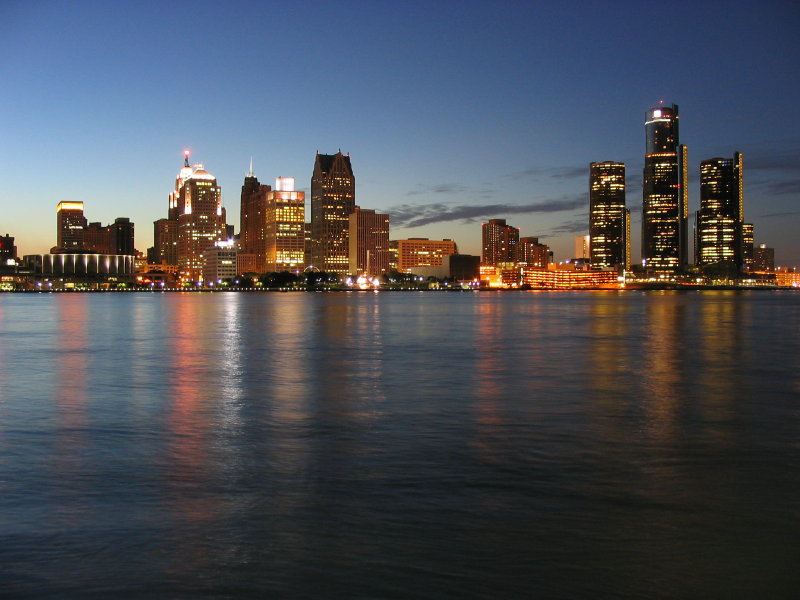
By Kelly House
The Great Lakes News Collaborative includes Bridge Michigan; Circle of Blue; Great Lakes Now at Detroit Public Television; Michigan Public, Michigan’s NPR News Leader; and who work together to bring audiences news and information about the impact of climate change, pollution, and aging infrastructure on the Great Lakes and drinking water. This independent journalism is supported by the Charles Stewart Mott Foundation. Find all the work HERE.
- Up to 3.2 million Michiganders get their water from aquifers containing detectible amounts of PFAS, according to a new federal report
- That’s 1-in-3 state residents, a stat that highlights the prevalence of both household wells and polluting industries in Michigan
- Michigan isn’t alone: Up to 95 million U.S. residents get their water from PFAS-tainted aquifers
Up to 3.2 million Michiganders may get their drinking water from PFAS-tainted aquifers, according to a landmark national study on “forever chemicals” in America’s well water.
That’s among the highest rates in the nation, attributable both to the heavy presence of polluting industries in Michigan and the fact Michiganders are more likely than most to get their water from private wells.
Still, even a state PFAS activist with firsthand experience of the devastation PFAS has caused in Michigan said she was shocked by the number.
“It should make everybody catch their breath and think,” said Sandy Wynn-Stelt, a Belmont psychologist who became a PFAS activist after discovering her water was polluted with PFAS from a Wolverine WorldWide shoe tannery.
“In America, we seem to think our water is safe. Evidently it’s not, and sadly, the burden seems to be going back on everyday citizens, not on the people that manufactured and profited from making (PFAS).”
The study by the U.S. Geological Survey, which relied on predictive modeling to screen for 24 of the thousands of PFAS compounds, was published Oct. 24 in the journal Science.
You can see your community’s risk level by viewing an interactive map of the study’s results.
Researchers concluded that 71 million to 95 million US residents may get their drinking water from aquifers containing detectable amounts of PFAS. That’s about half of all well users in the country — a stat that surprised even the researchers.
“We would have expected a little less than that,” said Bruce Lindsey, a USGS project manager involved in the study.
In Michigan, the number is between 2.3 million and 3.2 million people, including up to 1.4 million private well users and 1.8 million customers of public drinking water supplies that rely on groundwater.
To generate those estimates, USGS scientists built a model that predicts whether a well will contain one of 24 types of PFAS based on a number of contributing factors:
Is it close to a likely source of PFAS contamination, such as a military base, metal plater, plastic factory, airport or paper mill? Is it located in an urban area? Does it tap into a shallow aquifer that could be easily polluted when chemicals spill onto the ground?
“If you have shallow groundwater, and you’re near an urban area, and there are industries that use PFAS, then you’re on the very high end (of the vulnerability scale),” Lindsey said.
Known as “forever chemicals” because they don’t break down naturally in the environment, PFAS, or per- and polyfluoroalkyl substances, can be found in products like nonstick pans, fast food wrappers, waterproof boots and stain-proof couches. PFAS exposure has been linked to thyroid problems, developmental issues, hormone and immunity challenges, fertility issues and cancer.
There are 328 known or suspected PFAS contamination sites across Michigan, with more added to the list near-weekly.
Importantly, the USGS study predicted the likelihood of PFAS in the aquifers themselves, not in the water that eventually reaches residents’ taps. You may be at a lower risk if you filter your tap water or your municipal supplier treats its sourcewater for PFAS.
Amid a crisis triggered by a series of high-profile PFAS contamination discoveries from Oscoda to Kent County, Michigan in 2020 began regulating PFAS in public drinking water supplies. But only this year did the U.S. Environmental Protection Agency craft nationwide regulations.
Private wells are not subject to the PFAS limits, nor are they routinely monitored for the chemicals.
Lindsey said he hopes the study will inspire people to get their water tested if they live in an area with high probability of PFAS in groundwater.
For information about getting your water tested, contact the state Drinking Water Analysis Laboratory at 517-335-8184. PFAS testing through the state lab is $290.
Wynn-Stelt, the PFAS activist, expressed outrage that the industries behind Michigan’s PFAS contamination crisis aren’t paying for widespread water testing.
“People feel this false sense of security because there’s no factory across the street and there’s no dump next door,” she said. “But that doesn’t mean pollutants hadn’t been dumped there decades ago.”
Wynn-Stelt said Michigan should learn from the PFAS crisis by writing stronger laws to keep industries from polluting Michigan and then sticking taxpayers with the cleanup bill.
A package under consideration in the Legislature would enact a host of reforms, including requiring companies to hold insurance to cover cleanup costs. Industry groups oppose the legislation, saying they would be bad for business.
Catch more news at Great Lakes Now:
PFAS Roundup: Minnesota PFAS regulation said to be the strictest
Wisconsin Supreme Court to hear case with broad implications for PFAS cleanup
Featured image: Water fills a glass (Great Lakes Now Episode 1012)




